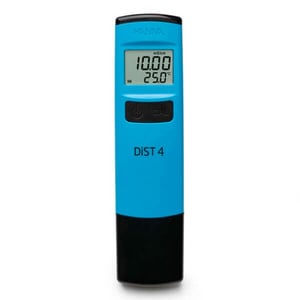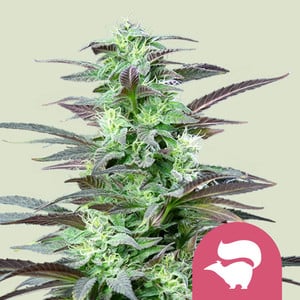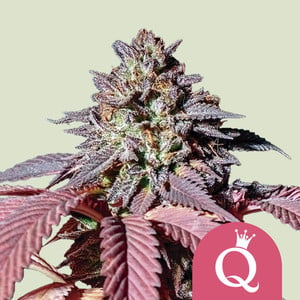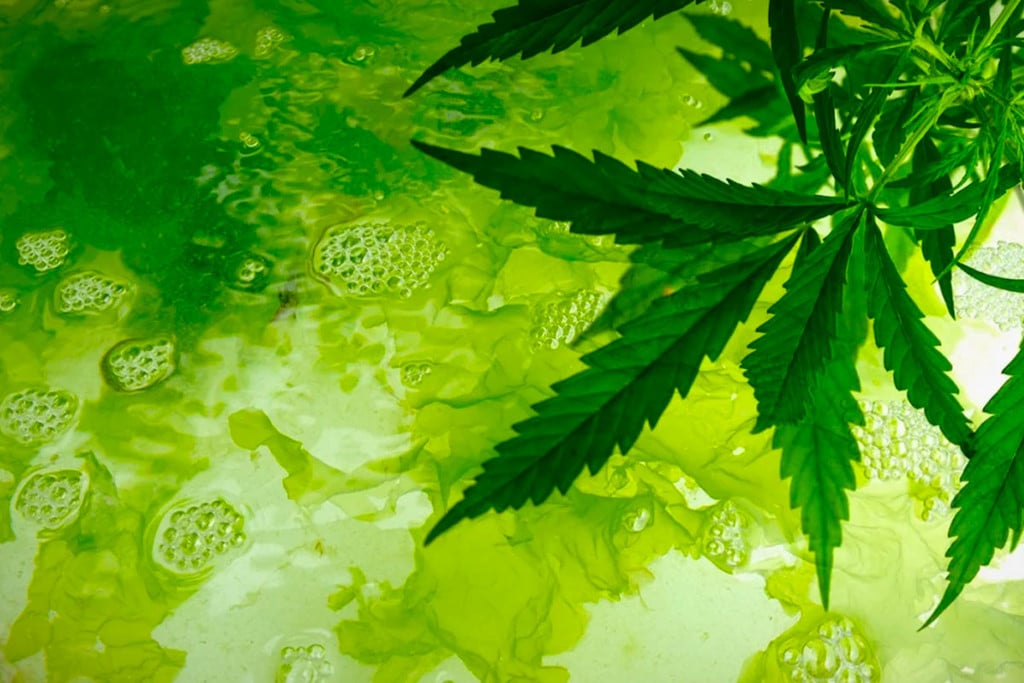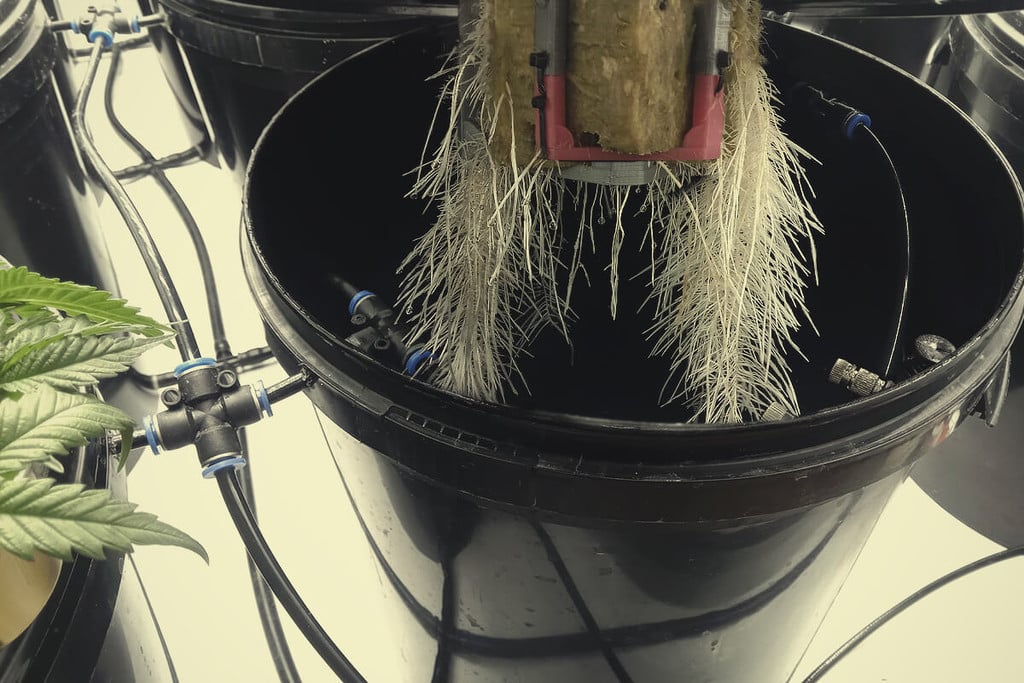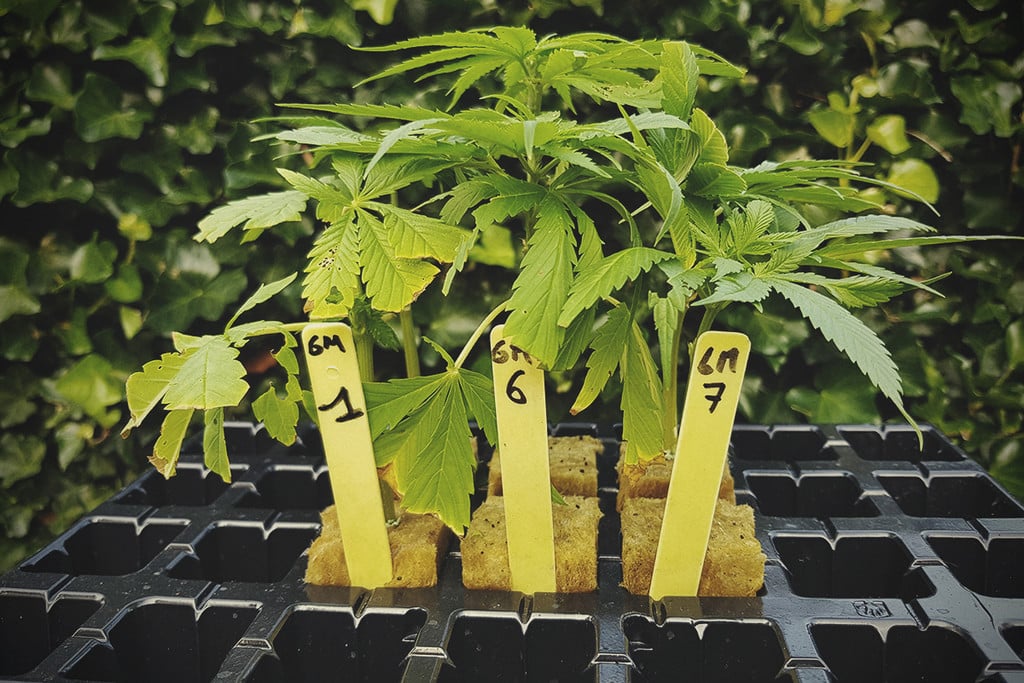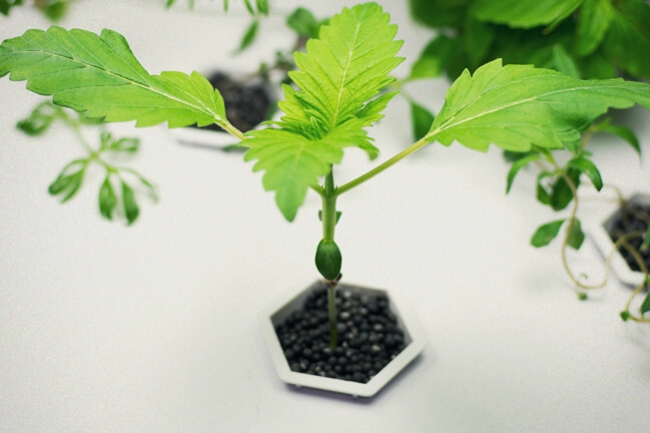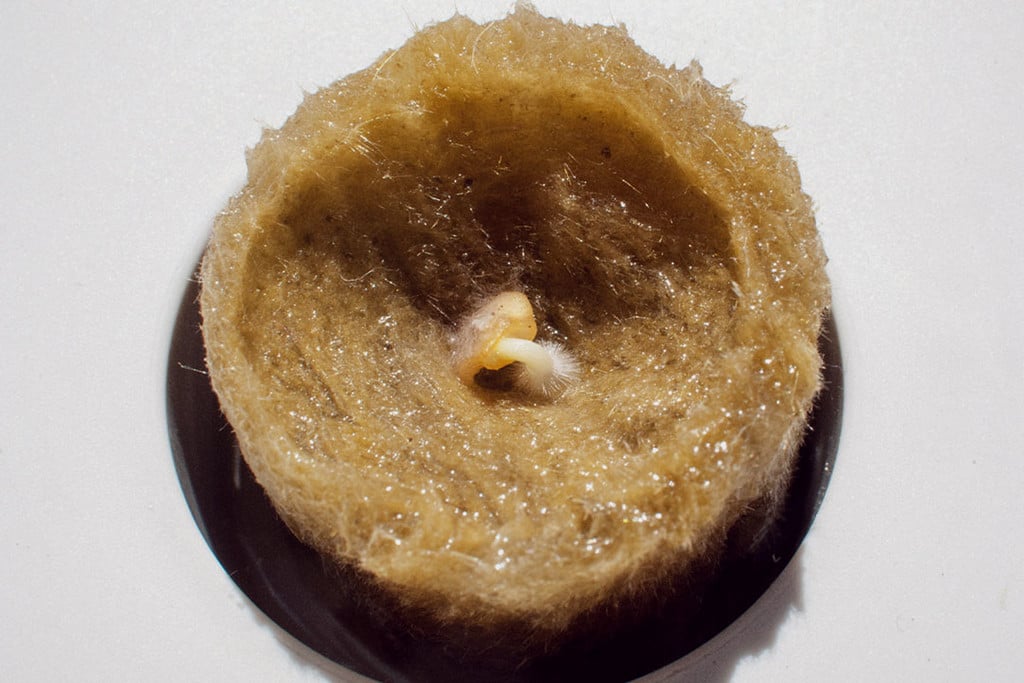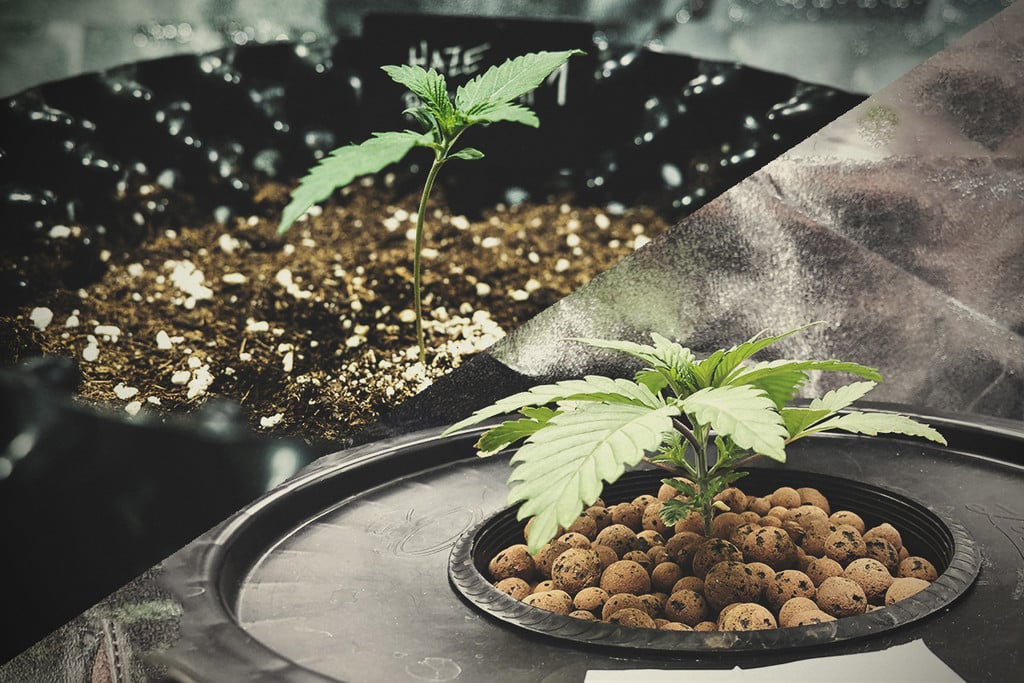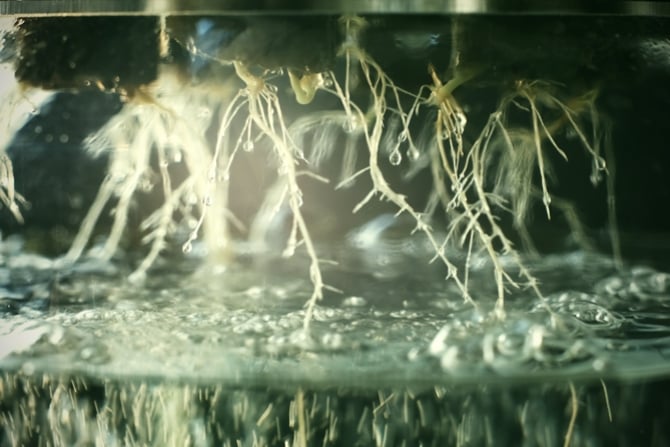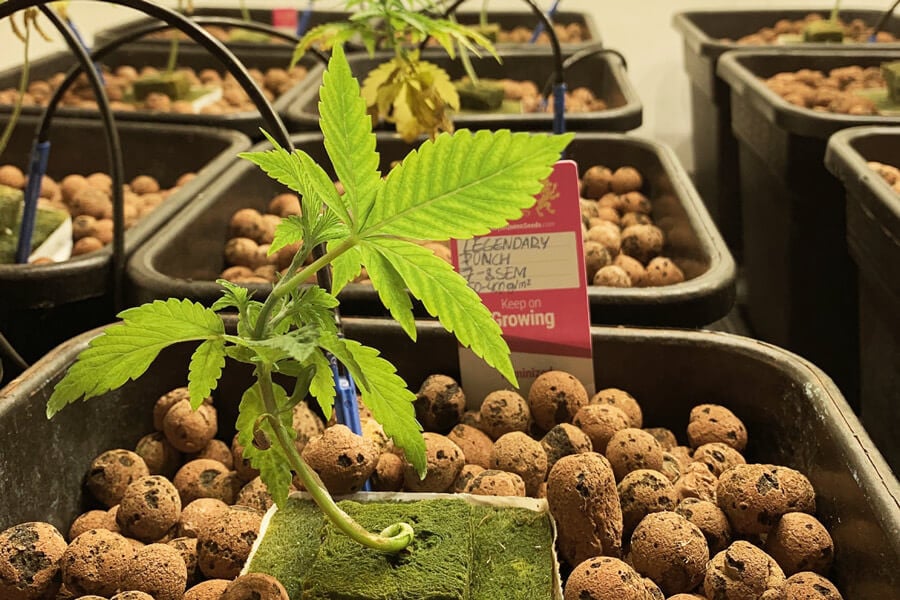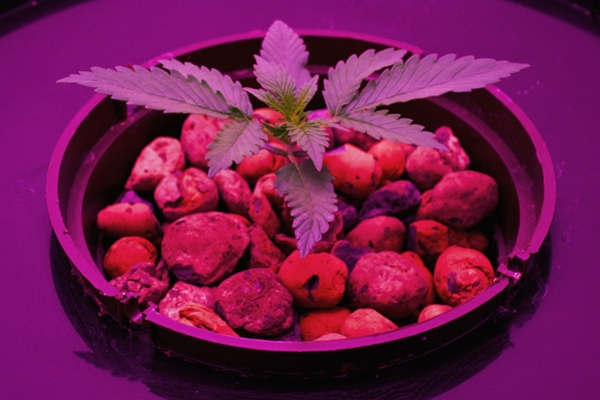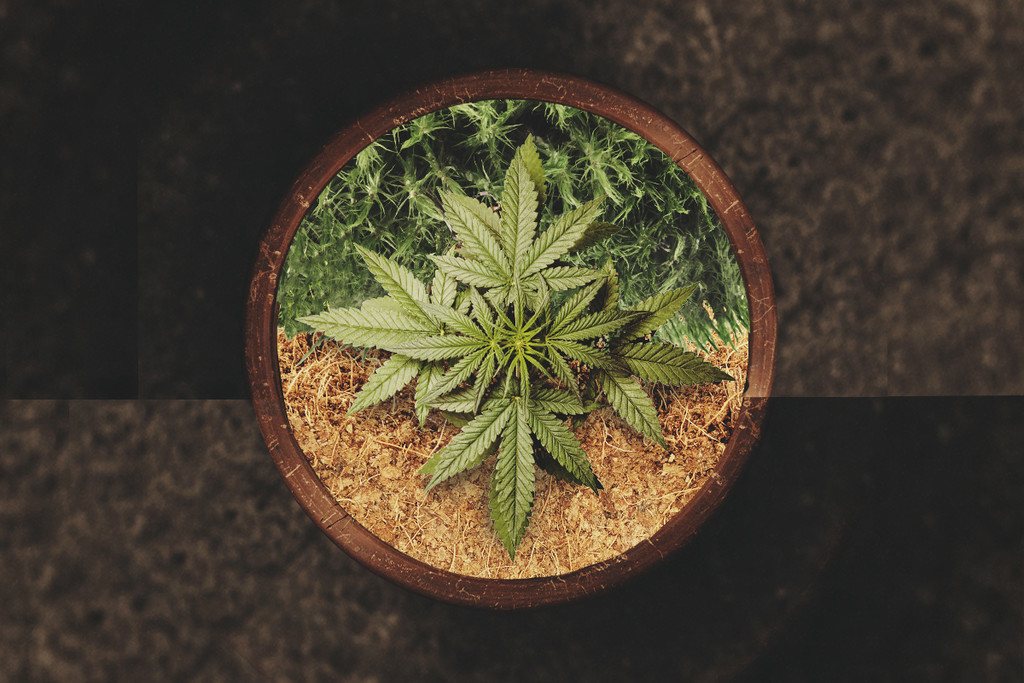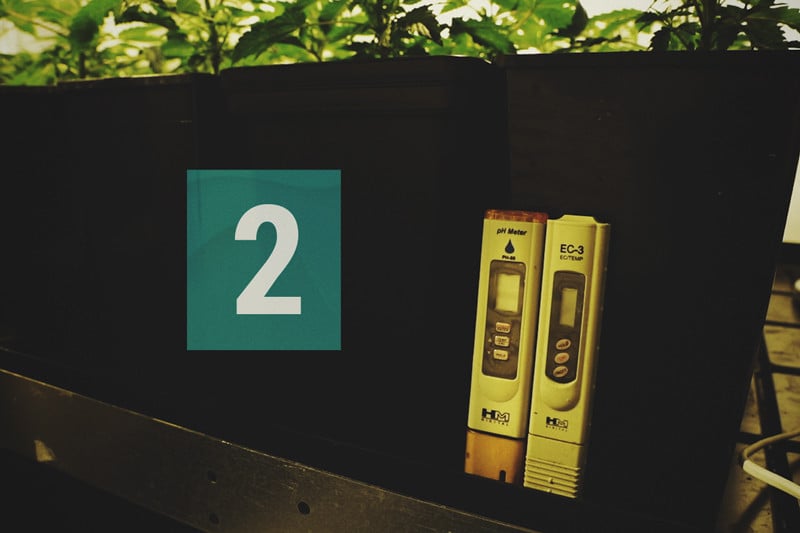.
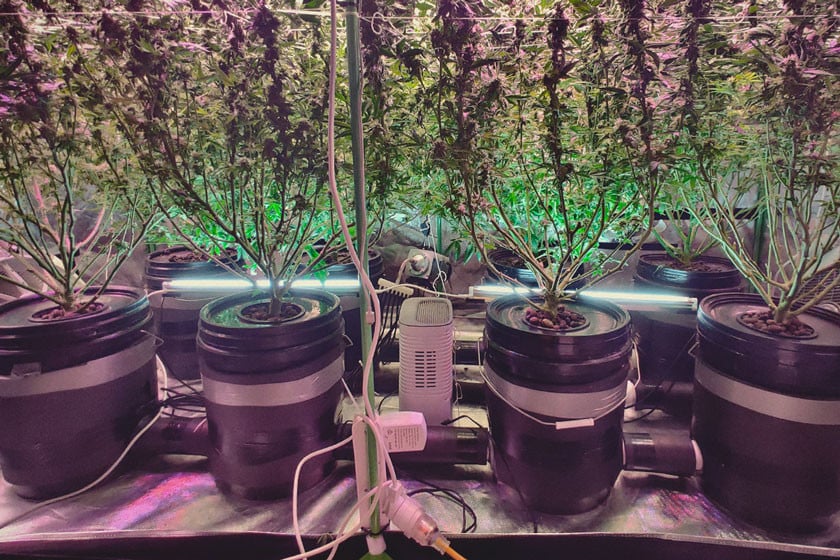
Achieve Huge Cannabis Yields Using Deep Water Culture (DWC)
Deep Water Culture (DWC) is a special type of hydroponics where you grow plants with their roots immersed in an aerated nutrient solution. Find out how more and more cannabis growers are using DWC to achieve faster growth and larger yields.
Contents:
Growers aren’t limited to soil when it comes to cultivating weed. Deep Water Culture (DWC) is one method of growing cannabis hydroponically that can have many advantages. Find out what makes a DWC grow so rewarding, and how you can set up one of your very own!
What is DWC?
Deep Water Culture (DWC) is a style of hydroponic growing that does not use a medium. In a DWC setup, the plants are suspended in special pots or nets, with their roots stretching down, immersed into a pool of aerated, nutrient-rich water. Growing cannabis in a DWC setup can have many benefits as compared to some other growing methods.
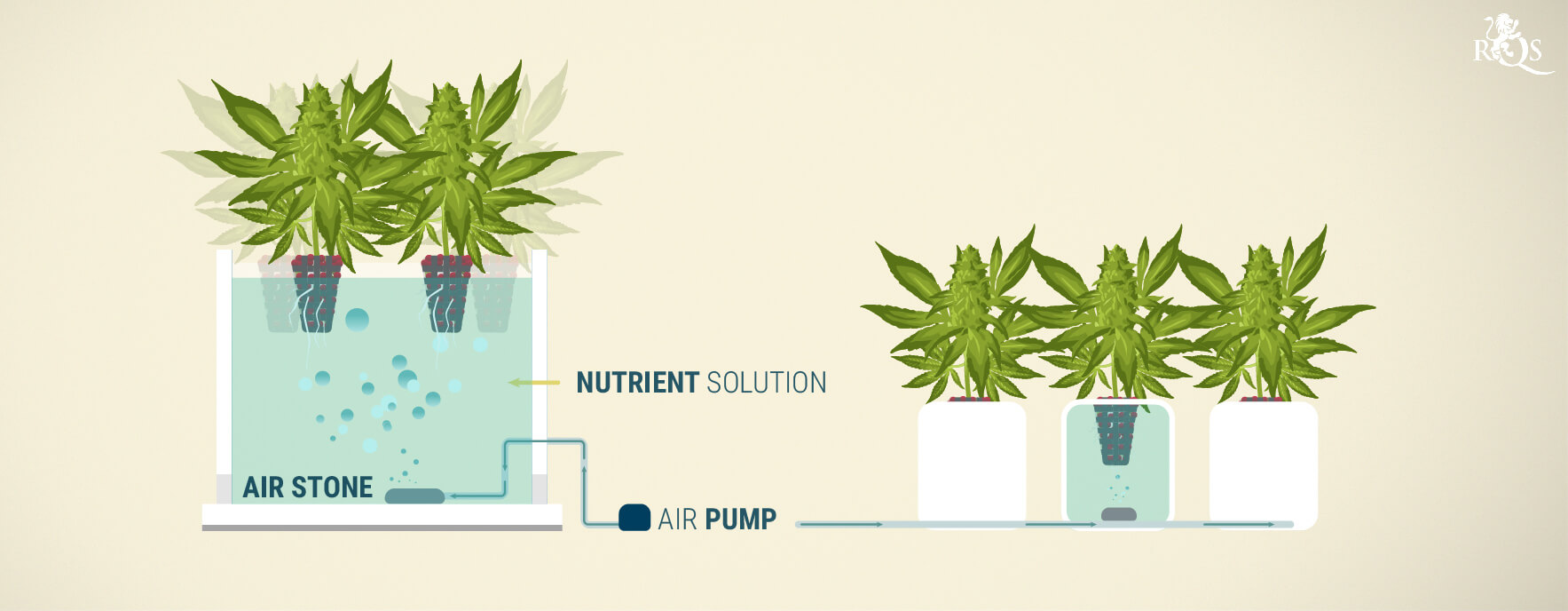
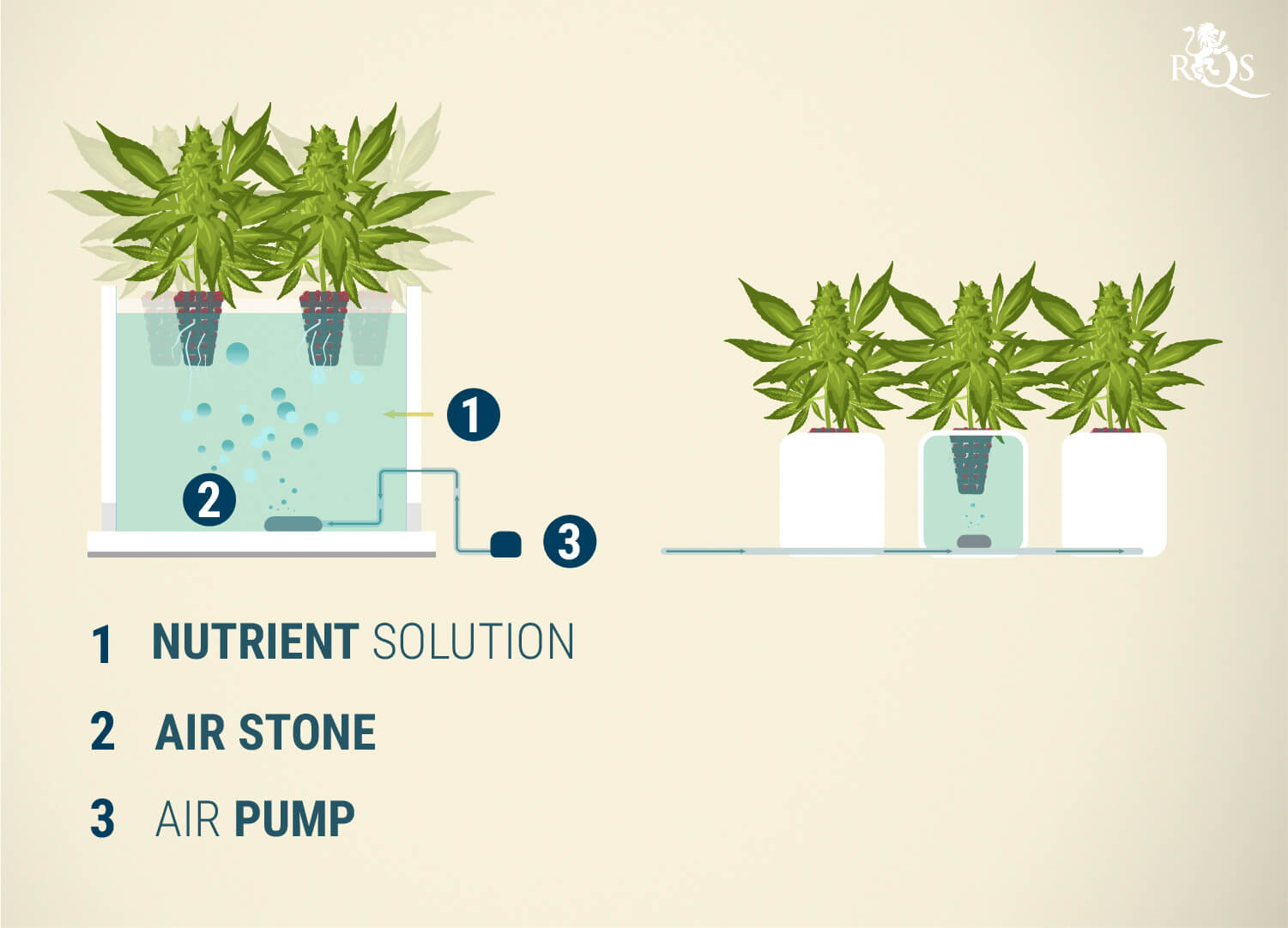
What Is Bubbleponics or Top-Fed DWC?
Bubbleponics systems, also known as top-fed DWC, are almost identical to normal DWC systems. However, they feature one small difference that improves root aeration, nutrient uptake, and speed of growth during the early portion of the vegetative stage.
Bubbleponic systems feature a water pump within the reservoir that is connected to small irrigation tubes. These tubes are inserted into the net pots hanging from the top of the system—exactly where the young roots emerge from the starting block. This means young plants receive a good dose of oxygen and nutrients before their roots reach the reservoir below, resulting in faster growth and better-established plants.
However, this technique comes with potential drawbacks as plants mature. The heat generated by the pump, although minimal, can add to the overall temperature of the growing environment. Furthermore, top-fed systems can cause deposits to accumulate around the upper portion of the root zone which can cause issues. For these reasons, growers are advised to discontinue top-fed DWC once plant roots make contact with the aerated solution below.
DWC vs RDWC
Now you’re more familiar with DWC, have you ever heard of recirculating deep water culture (RDWC)? Whereas DWC plants grow directly into a reservoir below, RDWC systems feature a standalone reservoir that contains a nutrient solution. These systems have the ability to service many plants at once with the same nutrient solution. Pumps are used to distribute the solution to many separate plants before it returns to the reservoir through a network of pipes.
RDWC systems are great for tending to many hydroponic plants simultaneously, but they cost significantly more to set up as they require pumps, plumbing and a water chiller. Adding to this, they also involve higher running costs because of the electricity needed to power the pumps to shift a larger fluid volume.
What are the advantages of deep water culture?
| Fast vegetative growth and bigger yields |
Plants grown in DWC setups have easier access to oxygen and nutrients, which means they spend less energy searching for nutrients and developing roots. As a result, plants will reward you with fast vegetative growth and excellent yields. In a good DWC setup with the right nutrients and strain, cannabis can grow as much as 10cm in a single day! Know that the speed of growth in a DWC doesn’t affect when your plants will be ready to harvest. The fast veg growth will result in bigger plants with fatter buds, but they will still require a normal flowering time. |
| Reduced risk of pests | Since a DWC setup doesn’t use any growing medium, there is little risk of bugs and other cannabis pests latching on. |
| Plants can grow larger | The lack of growing medium in a DWC allows your plants to take advantage of all the available space and nutrients to grow as large as possible. |
| Low-maintenance | Once a DWC system is set up and running, it requires very little everyday maintenance. You can even leave it alone for over 24 hours. |
| Watering is less difficult | A DWC system is fully automated, which means you don’t need to worry about under or overwatering your plants. Once set up properly, your DWC will always supply the right amount of nutrients and oxygen to your plants. |
| Fast vegetative growth and bigger yields |
|
Plants grown in DWC setups have easier access to oxygen and nutrients, which means they spend less energy searching for nutrients and developing roots. As a result, plants will reward you with fast vegetative growth and excellent yields. In a good DWC setup with the right nutrients and strain, cannabis can grow as much as 10cm in a single day! Know that the speed of growth in a DWC doesn’t affect when your plants will be ready to harvest. The fast veg growth will result in bigger plants with fatter buds, but they will still require a normal flowering time. |
| Reduced risk of pests |
|
Since a DWC setup doesn’t use any growing medium, there is little risk of bugs and other cannabis pests latching on. |
| Plants can grow larger |
|
The lack of growing medium in a DWC allows your plants to take advantage of all the available space and nutrients to grow as large as possible. |
| Low-maintenance |
|
Once a DWC system is set up and running, it requires very little everyday maintenance. You can even leave it alone for over 24 hours. |
| Watering is less difficult |
|
A DWC system is fully automated, which means you don’t need to worry about under or overwatering your plants. Once set up properly, your DWC will always supply the right amount of nutrients and oxygen to your plants. |
The Disadvantages of DWC
DWC works great most of the time. Growers consistently produce healthy, fast-growing plants with excellent yields. But these systems have a few disadvantages that turn some cultivators off. Check out the main downfalls below.
| Air Pump Failure |
While growers take steps to automate their DWC systems, accidents do happen. Whether the power cuts out or your pump fails, your plants will quickly decline without fresh air. A lack of oxygen means an anaerobic (void of oxygen) environment will take hold, resulting in slowed growth and the rise of undesirable microbes. |
| Temperature Maintenance | Hydroponic growers need to keep their solution at a temperature of 18–20°C for optimal growth. However, heat generated by the pump can make this difficult. Keep a thermometer handy, and use ice packs or hydroponic chillers when things get too hot for your plants to handle. |
| Parameter Fluctuations | DWC growers also need to regularly monitor and adjust fluctuations in nutrient concentration, water level, and pH. Constantly checking and fixing these issues can become quite a chore. |
| Air Pump Failure |
|
While growers take steps to automate their DWC systems, accidents do happen. Whether the power cuts out or your pump fails, your plants will quickly decline without fresh air. A lack of oxygen means an anaerobic (void of oxygen) environment will take hold, resulting in slowed growth and the rise of undesirable microbes. |
| Temperature Maintenance |
|
Hydroponic growers need to keep their solution at a temperature of 18–20°C for optimal growth. However, heat generated by the pump can make this difficult. Keep a thermometer handy, and use ice packs or hydroponic chillers when things get too hot for your plants to handle. |
| Parameter Fluctuations |
|
DWC growers also need to regularly monitor and adjust fluctuations in nutrient concentration, water level, and pH. Constantly checking and fixing these issues can become quite a chore. |
Is DWC suitable for new growers?
There is still a myth going around that DWC is “difficult”, but nothing could be further from the truth. It is really no more difficult than any other growing method where each has its own quirks and inconveniences. In fact, a DWC system can ultimately be one of the easiest methods to grow cannabis since it requires very little time and maintenance.
However, if one is still new to growing cannabis, it can be recommended to first grow hydroponically using a substrate like coco. This is because coco can be more forgiving, which allows the grower more room for error. That being said, there are plenty of cultivators who started out with a DWC setup and found success right away.
How to set up a DWC grow
For growing cannabis in a DWC, you will need these things:
- Water/nutrient reservoir (shared or individually for each plant)
- DWC net pots to hold your plants
- Hydroponic nutrients
- Air pump (and air stones) for the aeration of your nutrient water
Now, let’s take a look at each of these DWC components in more detail:
1. The reservoir
One difference of using a DWC system as compared to growing in a medium such as soil is the reservoir. In this setup, plants themselves will be suspended above the reservoir containing the feeding solution, while the roots will stretch down where they will be fully immersed in the nutrient-rich “deep water”. Since the roots should not receive any light (to prevent issues such as the growth of algae), the reservoir is normally a light-proof container.
There are different types of DWC systems: Some setups may have one large shared reservoir for a number of plants. Other setups may consist of several smaller DWC reservoirs for each plant. Separate reservoirs like this have the advantage of allowing more control over each individual plant. Otherwise, if you grow multiple plants that share one reservoir, it can become tricky when you grow different strains or when your plants flower at different rates. Therefore, you should grow only the same type of strain if you have a system that uses one large reservoir.
Recirculating DWC systems make use of one large tank that is connected to a number of individual smaller reservoirs for each plant. The feeding solution is fed from the large tank to each of the plants, and is recirculated back into the tank. Some systems may just have one air pump and an air stone in the large tank, while others may have an air stone in each container for each plant. Air stones create bubbles to ensure proper gas exchange.
Simpler systems for single plants may consist of one reservoir, a small pump, and an air stone for one plant. Due to the dramatic growth of a plant in a DWC, a small, single-plant DWC system could be sufficient to fill-out a small tent in just a few weeks.
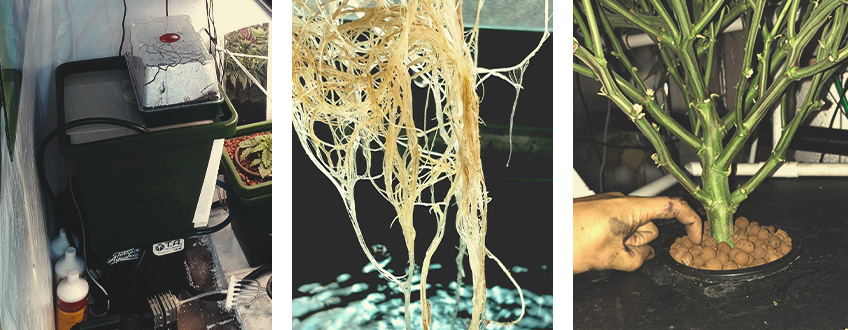
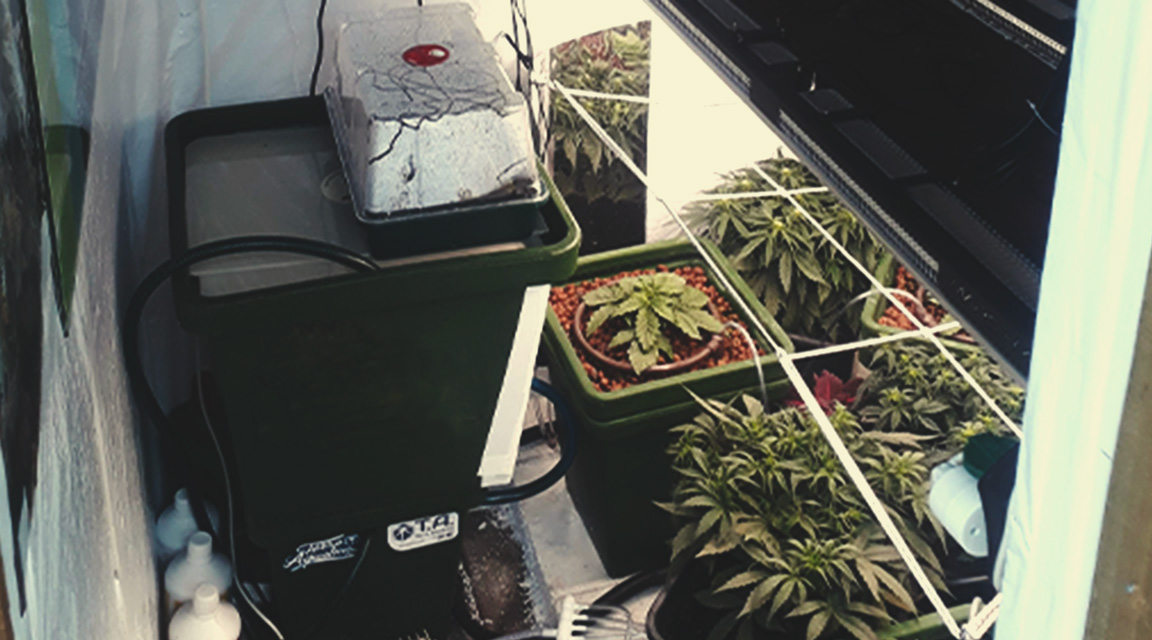
2. DWC net pots
In well-sorted grow shops that carry products for hydroponics, you can get so-called “net pots”, which are suitable for DWC systems. As compared to normal planting pots, these pots have a wide mesh so that the roots can easily reach the water below.
Alternatively, you can make your own DWC net pots out of almost anything by creating a number of large holes in containers or plastic flower pots. The difficulty here, however, is that cutting or drilling might result in sharp edges that could damage the sensitive roots. One good way to go about this is to use a soldering iron where you burn holes in the sides, rather than cutting or drilling them. (Do this outdoors since the fumes from burning plastic can be hazardous). You can also use baskets or nets for your DWC system.
Fill your net pots with an inert growing medium with low-water retention such as perlite, clay pellets (hydroton), or lava rocks. For germination, it’s best when to start out your seeds in Rockwool and transfer them over to your DWC after a couple of days.
Note: When your seeds have just germinated and are now sitting in pots in your DWC, the roots will obviously not be long enough yet to reach into your reservoir. Until this happens, you will have to top-water your plants. Some more elaborate DWC setups do top-feeding/top-dripping where water from the reservoir also trickles directly over the seedling’s roots. However, top-feeding only provided benefits for around two weeks. Most growers aren’t willing to carry out the extra work for such a short period and forgo this addition to their DWC setup.
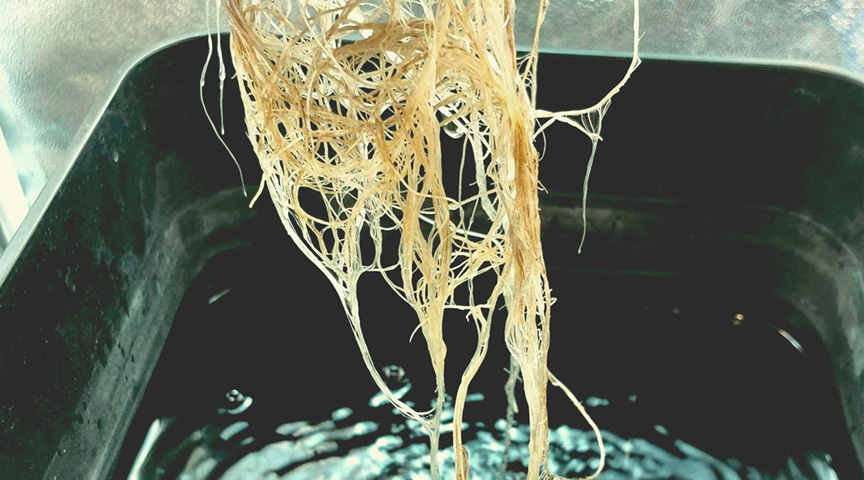
3. Hydroponic nutrients and additives for your DWC
Aside from using quality hydroponic nutrients in the recommended dosage for your particular reservoir, one of the most important things for hydroponics is pH value. Most of the time, if something goes wrong with a DWC grow, it is likely because of a pH imbalance. For your DWC, the ideal pH is around 5.8. Make sure not to stray out of a pH range between 5.5 and 6.5.
One advantage of DWC is that it can require less nutrients than other growing methods. However, you should be regularly monitoring the pH of your feeding solution. To correct any pH issues, you can get ready-made products such as a “pH Up” and pH Down” in any good hydroponics shop. Most of the time, you will only need a few drops of these pH correctors.
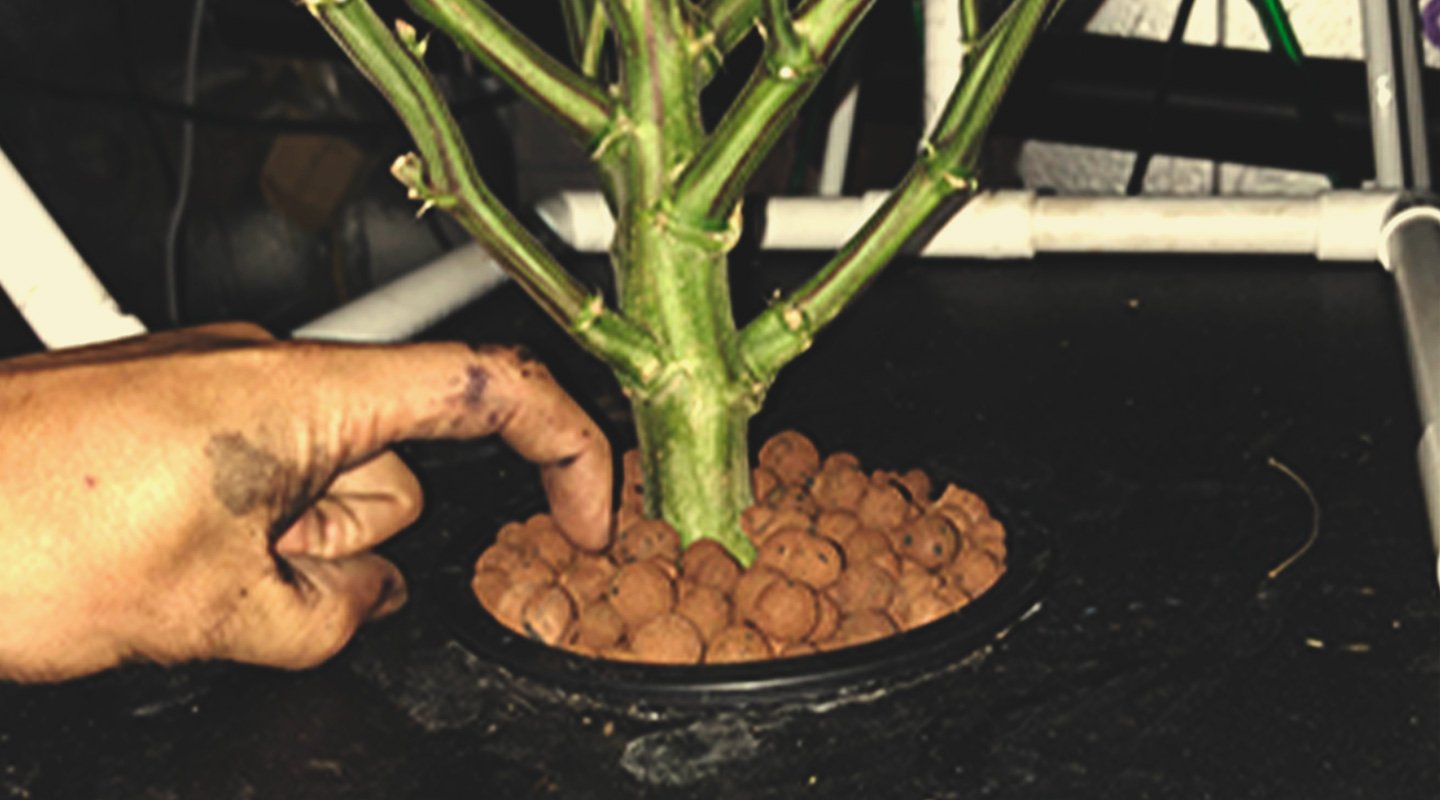
-
How Often To Refresh The Reservoir?
There are no rules set in stone for how often you should renew the reservoir in your DWC. Some growers drain and exchange their water every one or two weeks, although some go longer than that. Whether and when to top-off or exchange your reservoir contents will depend on how much nutrients your plants use.
For this reason, one of the most important tools in your DWC will be a good ppm/EC meter. With this meter, you can keep track of any fluctuations. With some experience, and by monitoring your plants’ nutrient intake, it might be possible to get through an entire grow without having to exchange your reservoir until your final flush. You may just be able to top-off your tank with nutrients to maintain your desired ppm value.
4. Aeration for your dwc system using an air pump
Your cannabis plants need oxygen to grow, which makes the air pump in your DWC a most critical component. In fact, many growers keep a backup emergency air pump should one stop working. Understanding that just one day without a working pump could likely kill your crops, having a backup pump will be smart and provide you with peace of mind.
-
Choosing An Air Pump For Your DWC
When looking around online, you will find lots of different air pumps offered that are not very expensive. You can get quite powerful pumps for less than €30 today. A problem, however, can be choosing the right one for your DWC system. Air pumps mainly differ in how much air they can pump per hour.
As a general rule, you should get an air pump that can supply at least double the litres per hour of the volume of your reservoir. For example, if you have a 100l tank, get a pump that can supply 200l/hour. Know that an air pump costing you no more than a few euros will likely not last a lifetime, so get the backup pump as well. And while you’re at it, also get some more air stones. It’s always better to be safe than sorry!
Choosing the correct air pump will help to achieve the best results when growing hydroponically. Investing in a good pump will help you avoid common DWC issues and provide enough pumping power to operate your setup correctly. First of all, we suggest investing in a high-quality pump to avoid overheating issues. Hydroponic air pumps often get too hot and alter the temperature of the nutrient solution. Several factors can cause this including poorly made, cheap pumps that generate too much friction. Using a powerful pump alongside a small nutrient reservoir can also cause heat to build up. As well as investing in a high-quality pump, you also need to select a model with the appropriate power for your reservoir. You can work this out simply by aiming for 1 watt of pumping power per gallon of solution.
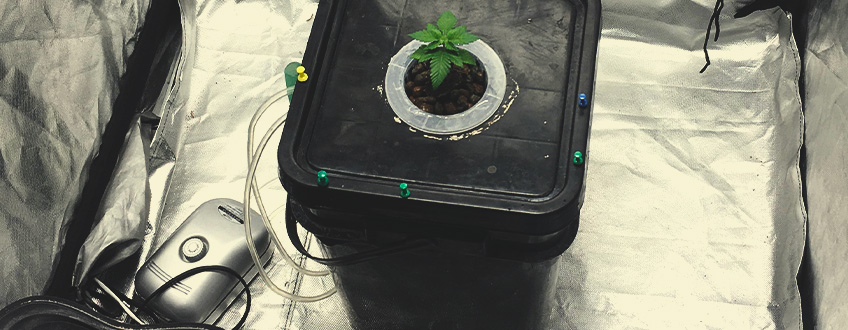
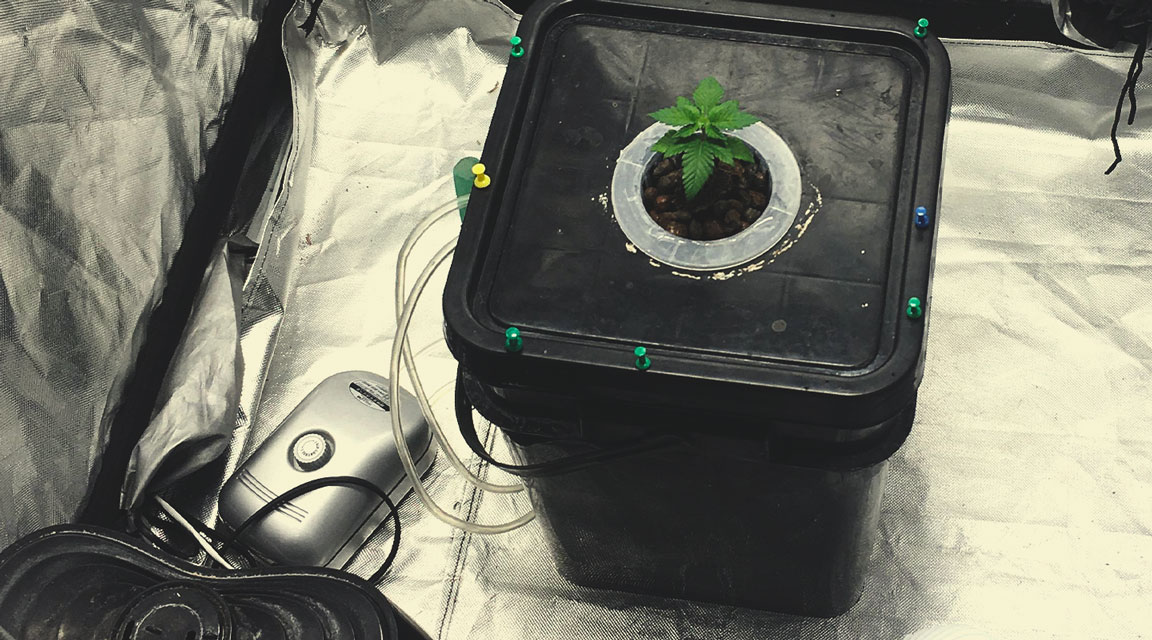
-
Air Pumps And Noise
Modern air pumps can be quiet, yet the overall noise from a DWC system from vibrating parts can still be a concern, especially if you want to keep things stealthy and under the radar. Your air pump will likely be the noisiest part in your setup, but there are things you can do to make it even quieter. You could hang the pump instead of putting it on the floor, which can help minimise unwanted vibrations and noises. When you glue on any loose and wiggling parts from your DWC system, such as tubes or whatever else might rattle and shake, this can also make a big difference when it comes to noise levels. For large pumps, you can put these into a noise-isolating chamber as long as you make sure that the pump can still get air to function.
The best strains for DWC
You can grow pretty much any strain in a DWC if you keep a close eye on everything. On the other hand, some strains are less susceptible to fluctuations that can happen in a DWC system, making them an overall better choice for hydroponics.
When selecting strains to choose for your DWC grow, you may want to opt for plants that have tried and tested success in hydroponic grows.
Here is a list of strains by Royal Queen Seeds that can tolerate nutrient/pH fluctuations well:
ROYAL MOBY
Royal Moby by Royal Queen Seeds is a potent, sativa-dominant hybrid that can handle large amounts of nutrients without being overfed, which makes her a great choice for DWC. Get ready for a powerful high thanks to her 21% THC!
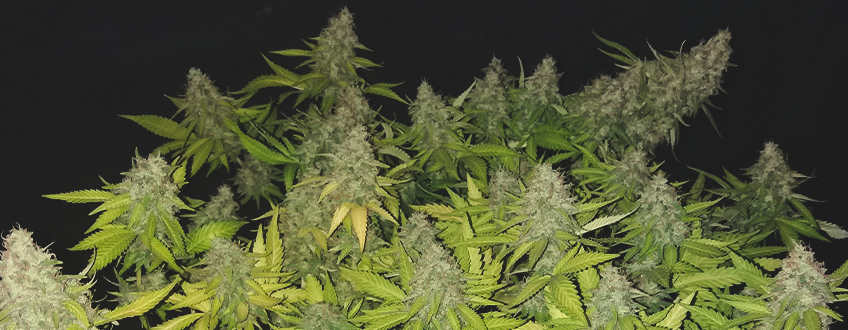
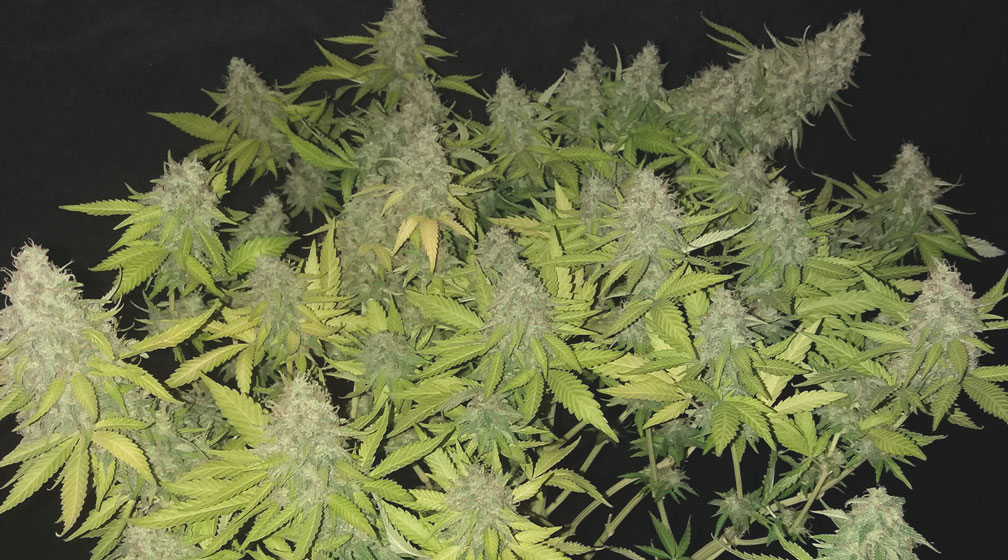
Royal Moby
|
|
Haze x White Widow |
|
|
550 - 600 gr/m2 |
|
|
80 - 140 cm |
|
|
9 - 10 weeks |
|
|
THC: 21% |
|
|
Sativa 65% Indica 35% |
|
|
650 - 700 gr/plant |
|
|
200 - 300 cm |
|
|
Late October |
|
|
Balanced, Clear, Stoned |
AMNESIA HAZE
Amnesia Haze by Royal Queen Seeds is made from old-school Haze genetics, and is considered by many to be one of the best Haze varieties. The super-potent sativa (70%) delivers a truly psychedelic head high, and is very well-suited for hydroponics, including DWC.
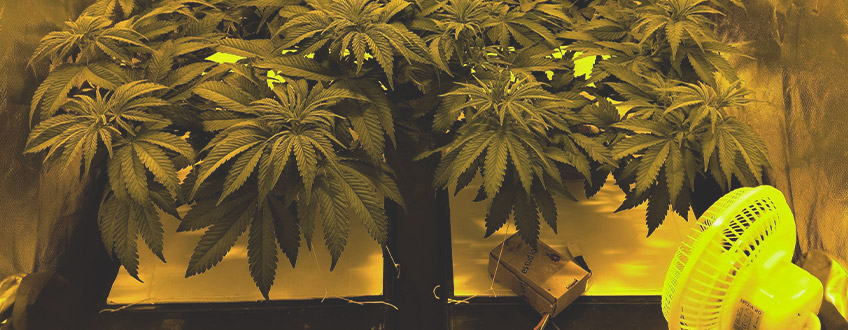
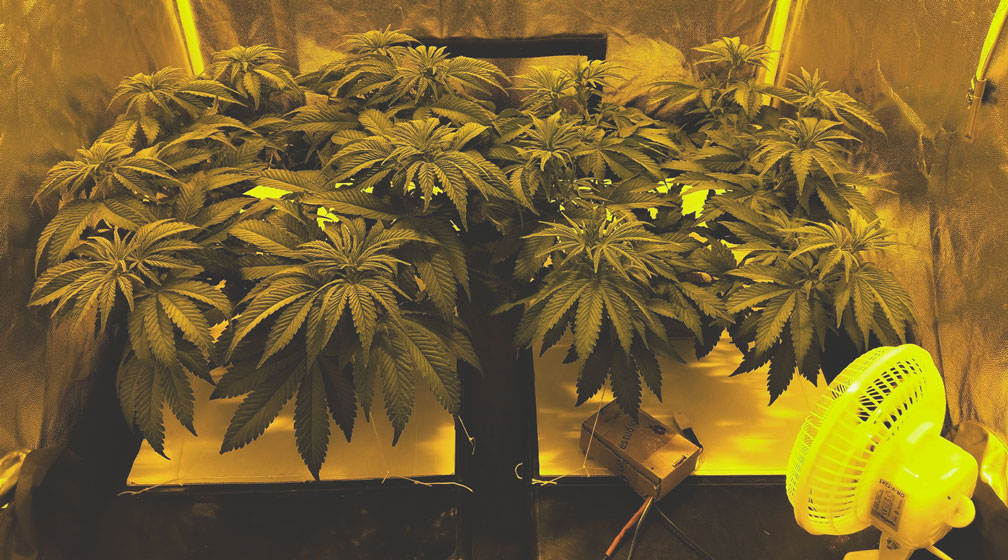
Amnesia Haze
|
|
Original Amnesia Haze |
|
|
600 - 650 gr/m2 |
|
|
80 - 140 cm |
|
|
10 - 11 weeks |
|
|
THC: 22% |
|
|
Sativa 70% Indica 30% |
|
|
650 - 700 gr/plant |
|
|
175 - 210 cm |
|
|
Late October |
|
|
Long Lasting , Physically Relaxing, Powerful |
BLUE CHEESE
The legendary strain from the UK blended with the fruity aroma of Blueberry: Royal Queen Seeds' Blue Cheese doesn't just taste amazing—the strain takes on a great shape when you grow her in a SOG or DWC.
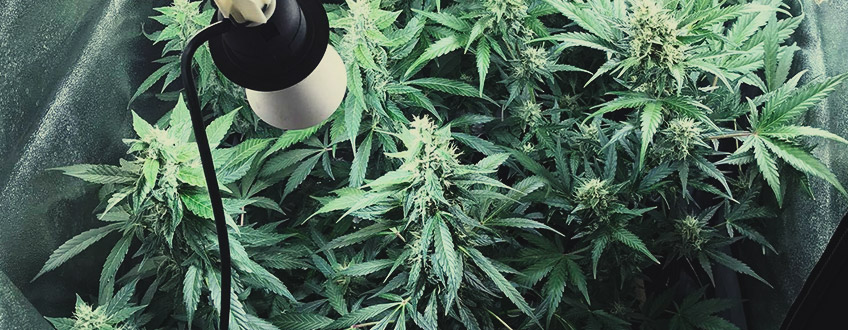
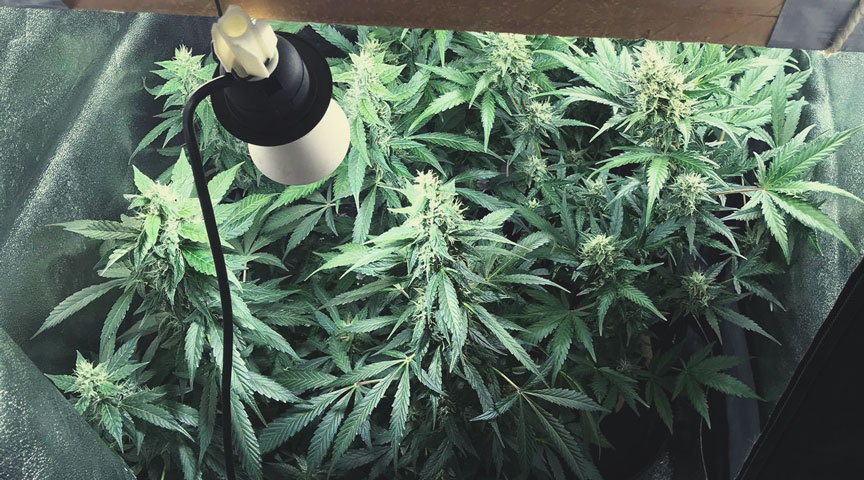
Blue Cheese
|
|
Original Cheese x Oregon Blueberry Blend |
|
|
500 - 550 gr/m2 |
|
|
100 - 160 cm |
|
|
8 - 9 weeks |
|
|
THC: 19% |
|
|
Sativa 40% Indica 60% |
|
|
500 - 550 gr/plant |
|
|
140 - 200 cm |
|
|
Late September |
|
|
Clear, Physically Relaxing, Stoned |
SKUNK XL
An absolute classic, Skunk XL is Royal Queen Seeds' modern version of the legendary Skunk #1. This 50% sativa/indica hybrid has a well-balanced effect that mixes an uplifting head high with a relaxing body stone. She does well in many conditions including hydro, and takes a particular liking to DWC.
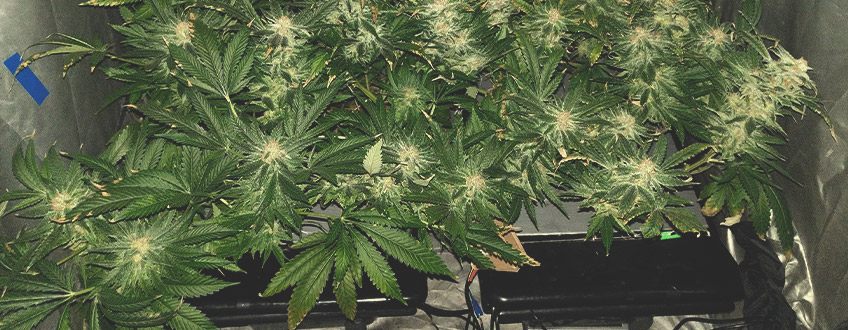
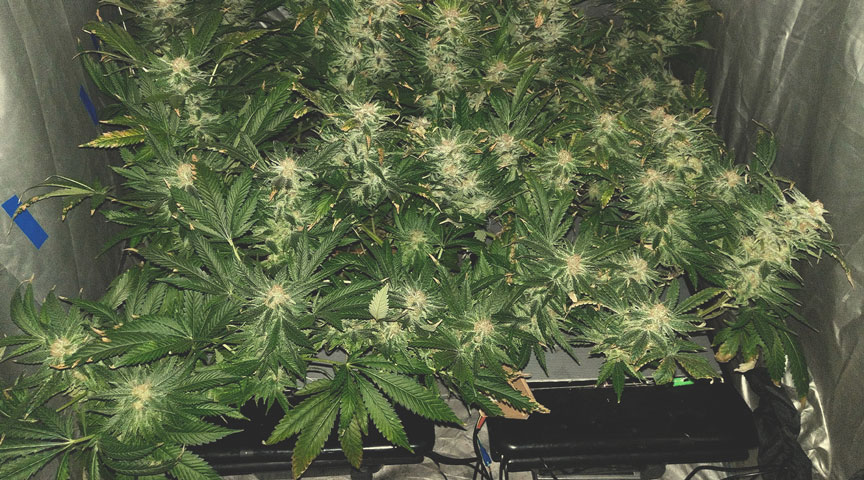
Skunk XL
|
|
Skunk 1 x Afghan |
|
|
600 - 650 gr/m2 |
|
|
60 - 100 cm |
|
|
8 - 9 weeks |
|
|
THC: 17% |
|
|
Sativa 50% Indica 50% |
|
|
625 - 675 gr/plant |
|
|
160 - 200 cm |
|
|
October |
|
|
Balanced, Clear, Stoned |
PURPLE QUEEN
Purple Queen by Royal Queen Seeds is an indica-dominant cultivar that blends the qualities of purple phenotypes of Kush mountain strains. This gorgeous lady loves to show off beautiful colours and rewards you with a deeply relaxing smoke. She has a high tolerance to fertilisers, which makes her very suitable to grow in DWC.
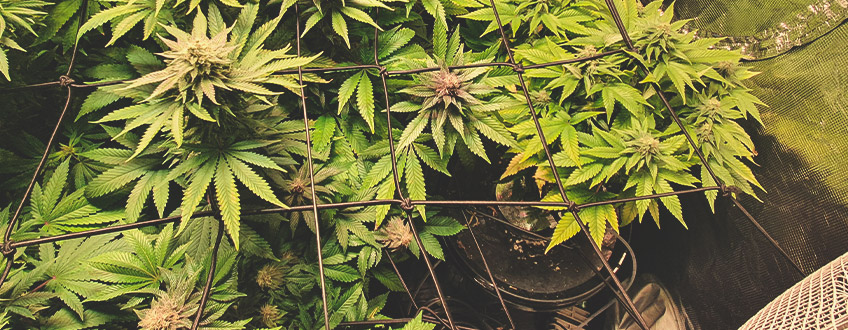
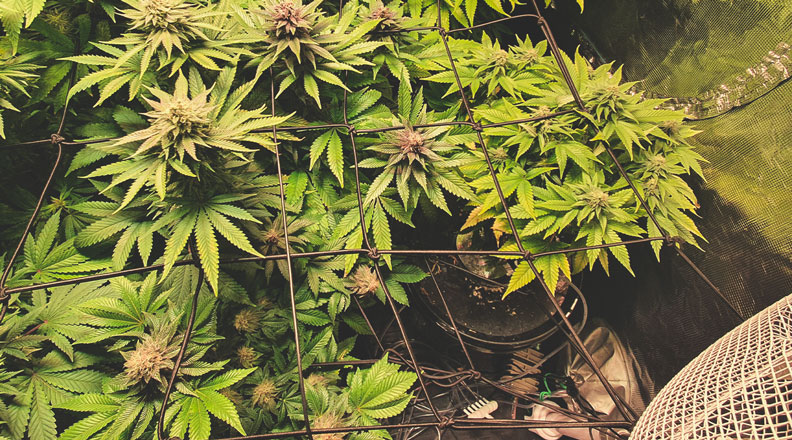
Purple Queen
|
|
Hindu Kush x Purple Afghani |
|
|
450 - 500 gr/m2 |
|
|
80 - 120 cm |
|
|
8 - 9 weeks |
|
|
THC: 22% |
|
|
Sativa 25% Indica 75% |
|
|
650 - 700 gr/plant |
|
|
175 - 210 cm |
|
|
October |
|
|
Calming, Euphoric |
Common Questions When Setting Up DWC Systems
At Royal Queen Seeds we receive plenty of frequently asked questions, including those oriented around DWC systems. Check out the answers to some of the most common queries below.
- ? How Often Should I Change the Water in My DWC System?
- You should aim to replace the water in your DWC system every 1–2 weeks. If life starts to get busy, wait no longer than 3 weeks to refresh your nutrient solution. Replacing your water regularly will nourish your plants and keep diseases at bay. Remove your plants from the reservoir and place them in a temporary container. Wipe everything down with a 3% hydrogen peroxide solution, spray it down, pour in your fresh nutrient solution, and return your plants to the system.
- ?️ What Temperature Should I Aim for in My DWC System?
- You need to consider both the air and water temperature of your growing space. Place a thermo-hygrometer in your room; this handy tool measures both temperature and humidity. Aim to maintain an air temperature of 24–27°C. You can regulate this using fans and air conditioning units. Place a hydroponic thermometer into your reservoir. You want to maintain a water temperature of 18–20°C. Use ice packs or hydroponic coolers to regulate this if necessary.
- ? How Often Do I Need To Feed the Plants in My DWC System?
- Hydroponic cannabis plants have access to free-form nutrients, and they rapidly gobble up these molecules to fuel their growth. You’ll need to replace the nutrient solution every 1–2 weeks to keep up with their demands. Because hydroponic nutrients are dissolved in water, you’ll naturally replenish their supplies every time you change out the water. It’s a two-birds-with-one-stone situation.
Conclusion
Growing cannabis in Deep Water Culture doesn’t need to be difficult. It may require some fine-tuning at first to get everything right, but so does any other growing method. Once you have your DWC set up and running with everything in check, it will make growing great cannabis easier and quicker than before.
Good luck with your first DWC grow!


























